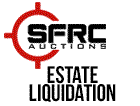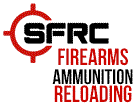Hey folks,
Looking at getting something more reliable than me working from home all day and a couple of key-locks to keep the PDWs safe.
Any suggestions on decent, preferably non-obvious/obtrusive safes?
Thanks,
Results 1 to 9 of 9
-
05-01-2016, 11:49 AM #1
Recommended Locks / Storage\Safes
-
05-02-2016, 08:32 AM #2Senior Member

- Join Date
- Mar 2014
- Posts
- 979
Retired Maryland State Police Captain Jack McCauley speaking in the Maryland Senate for CCW reform:
https://www.youtube.com/watch?v=ZdUaPDiW-GY
-
05-02-2016, 10:28 AM #3
[this post is about the UL definition of a 'Safe', which is far far more than I expect the original post was asking and far more than most do]
Wendel is fantastic about small locks and lock picking.
The security snobs website sells very nice stuff.
But those two YouTube videos are rather poor.
TR means Torch Resistant.
TL means Tool Resistant.
TX means Explosives Resistant.
X6 means that protection is on all six sides, otherwise it sometimes means only the front face and door.
A TL-15 rating means a safe can resist physical attack from simple tools (hammer and big screwdriver) to its front face or door for more than 15 minutes.
A TL-30 rating means a safe can resist physical attack from slightly more interesting carried hand tools to its front face or door for more than 30 minutes.
A TRTL-30X6 UL rating means a safe is certified to resist entry from torch and tools on all six sides for a half-hour.
Common hand tools, no power tools, no lever length exceeding 18 inches.
The 'attack' is done by experienced experts, who have examined the safe open and may have seen design drawings.
Residential Secure Container (aka RSC) is the lowest rating that UL (underwriters laboratories) has. Note the lack of the word 'safe' because UL doesn't consider these to be a safe. A container is not a safe. Most gun safes you'll find in big box stores can get this with 14 gauge sheet steel bodies, 12 gauge a little better, 10 gauge better still. Outside of big box stores 7 gauge is available. No big surprise if you poke the side of a 12 gauge with your finger it will bend with the pressure, and it can be breached with a sledgehammer and chisel or prybar or even dropping it. If someone uses a lot of thick steel (1/2" armor plate) all around and puts a bad combination lock on it and it fails the TL-15 test, it can get an RSC rating. RSC is a UL certification, although it means very little. The RSC test involves a safe which keeps out a UL tech with a hammer and a screwdriver for 5 minutes. Some RSCs are better than others. There are a lot of safes that don't have the RSC label that are just as good, or better than those that do.
To get a bit of 'fire resistance' rating they put a sheet of drywall between the thin sheets of steel, which has some insulating properties and when they get hot enough emit moisture into the safe itself filling the safe with steam so paper and jewelry might survive a bit longer than anything made of plastic like computer media. The fire tests have a very specific protocol, and don't get as hot or as long as most total-loss house fires. You can put your fist through a sheet of drywall, so it's not a burglary resistant material. Drywall also breaks when dropped. Big Box stores prefer lighter items that can be put into the backs of customer family vans, so by the time you get to a rifle safe the 'drywall' layer is as light as possible.
Higher end safes, that you won't find at Bass Pro Shops, use newer concrete materials with over 50,000 PSI mixed with ceramics and other things to improve the fire rating and security of the safe. These lightweight gun 'safes', if you are looking for minimal burglary protection and to keep the kids out, are quite popular. All the StackOn products are RSC, including their 'safes'.
UL Fire Endurance Test: After heat sensors and paper are placed inside the safe, the unit is locked and exposed to a uniformly distributed fire. The furnace is regulated to reach a maximum temperature of 1700°F for a period of one hour, or 1850°F for two hours, then allowed to cool without opening the furnace. The interior temperature is recorded throughout the test and during the cooling period until a definite drop is shown and must never exceed 350°F. Once cooled , the unit is opened and examined for usability. The units locking mechanisms and parts fastenings are examined for security and the interior examined for visible evidence of undue heat transmission. Safes when manufactured are made to keep the interior of the safe at 350 degrees (paper burns at 451 degrees). CDs and DVDs melt at about 200 degrees. So there was a strong chance that any media kept in the safe would melt and probably destroy anything around it.
UL's safe testing against burglary begins at TL-15. For most insurance purposes, a safe begins at a B rate. A B rate safe uses a 1/2" door and a 1/4" body. A C rate safe uses a 1" door and a 1/2" body. Here I'm not talking about two sheets of 12 gauge steel separated by 1" making a 1" thick door, or two sheets of 10 gauge steel separated by 5" making a 5" thick door. I'm talking about 1/2" of solid steel or 1" of solid steel or more, with a tiny hole drilled in the middle for the dial, and the bolt mechanism welded to the back of it. Your average Liberty safe has 1/10" steel walls and door.
AMSEC and Graffunder are the top of the line for real safes that are also gun safes. Graffunder cost a mint.
By way of example, the AMSEC RF6528. The outside dimensions are 72 x 35 x 29. This safe uses a 3.5" composite body (steel and concrete) with a door construction using a 2.75" composite construction. It has a 2 hour, non UL, fire label, and weighs 3,455 pounds, and is worth about $10,000. This safe carries a UL TL-30 burglar rating, which is what you will typically see in your jewelry stores. This rating would allow an approximate insurable rating of $300,000.
The comparable Graffunder, size-wise, is the B7240. That's also 72" H X 40" W X 27.5 D, and weighs in at 2100 lbs. It's constructed of A36 high tensile steel throughout. The door is a solid 1/2" steel plate. All the other sides are 1/4". The frame is 3/4". The sides, top, and bottom are backed with 1.5" of a concrete-based proprietary insulation. The concrete is backed with 16 gauge steel. The burglary rating is "B". The Graffunder company has told us that it meets the U.L. one hour fire standard, but it is not U.L. stickered. That's 1700 f for one full hour, every minute at 1700.
Needless to say, there are some RSC safes which are better than others. The best RSC you can buy is from a California company called https://www.sturdysafe.com . Good locks, good steel (7 gauge+), decent price. These don't bend when you poke your finger into them, and are made to tolerances to resist prybars. Their website has several excellent educational videos, that are worth watching, that explain the differences in RSCs better than any place else.
If you want a real safe, a B or C with a TL rating, then http://www.canadiansafe.ca/ makes them from Hamilton Ontario. Your local security store (a locksmith only store) will probably be able to get a real safe, and deliver it to you.
StackOn safe's combination locks notoriously poor quality. As opposed to 'Sargent And Greenleaf' UL rated, which are commonly available yet good.
Above are the UL definition of a safe.
The Canadian legal definition of a safe, for gun purposes, is quite a bit less.
A safe's security is often mixed with other security techniques, including hiding, alarms & surveillance, dogs, and someone home all the time. These probably have no effect on your own children.
-
05-03-2016, 10:37 AM #4Senior Member

- Join Date
- Sep 2015
- Location
- SWOntario
- Posts
- 2,743
You do not need a 'safe' to satisfy the law. Any lockable container does that. Including regular steel storage cabinets from any office furniture supply shop. None of those have a fire rating if that's what you're looking for. Cabinets like those tend to be high priced and heavy. Some being heavy to the point you need to consider where it'll live. Note the weights given on RangeBob's link to CSM. And the retail cost of 'em. Lot of 'em will fit nicely into an apartment bed room closet.
"...the UL definition..." Is also American. Probably very close to, if not the same, as the Canadian Standards Association definition though. Something I'm not finding. Mind you, those are primarily about how long anything in said safe will be protected from fire. And insurance companies tend to recognise UL standards in Canada.
-
05-17-2016, 01:31 PM #5Junior Member

- Join Date
- May 2016
- Posts
- 9
thank you SeirX for making this post , and thank you Wendell and RangeBob for the great info
-
05-17-2016, 04:14 PM #6
Thought I'd copy this here:
 Originally Posted by EdmontonAlberta
Originally Posted by EdmontonAlberta
-
The Following 2 Users Like This Post By RangeBob
Kobs (03-19-2017), ROADGLIDE45 (03-06-2017)
-
03-06-2017, 09:48 PM #7Member

- Join Date
- Feb 2017
- Location
- Ontario
- Posts
- 68
I had an interesting experience with my stack on electronic combo keypad today when I touched it...I accidently zapped it after walking across the carpet. Damn static electricity.
Was kinda worried, because some numbers would "work" but some were "dead" when I pressed them. Uh oh.
Took the battery out, and gave it a rest for a couple of minutes.
It's fine now. Gotta try to locate the manual to see if anything is mentioned there about this.
-
03-06-2017, 10:08 PM #8Junior Member

- Join Date
- Mar 2017
- Location
- Manitoba
- Posts
- 25
I also had a fantastic experience with Stack-On. Bought the safe from Crappy Tire, got it home, and found some parts were missing from the box. I emailed them and Stack-On shipped out all the missing parts, including two new keys that day, no questions asked (I did need to prove I owned the safe).
-
03-19-2017, 07:13 AM #9Senior Member

- Join Date
- Mar 2014
- Posts
- 1,116
I have an old garage paint and flammable stuff locker 72 X 20 X 36, that I got for free.It's about the same gauge as a stack-on locker but welded. I modified the locking mechanism with a stronger round key lock and 2 inch flat bars instead of the 1/4 inch rods that locks up and down. I also made holes all the way through the doors to slide another 2 inch flat bar horizontally and locked that with a hard to pick padlock (nothing is pick proof). Even with tools someone would have a hard time getting in, and we all know a burglar wants to go out in a hurry (5 minute max) That would suppose that same burglar would know what's in it because it doesn't look like a "safe" or that it has anything important in it. That is also a good point to consider, make it look like it's a normal piece in the room.
I'll do what I have to do and deal with the consequences of my actions later
















 Reply With Quote
Reply With Quote


